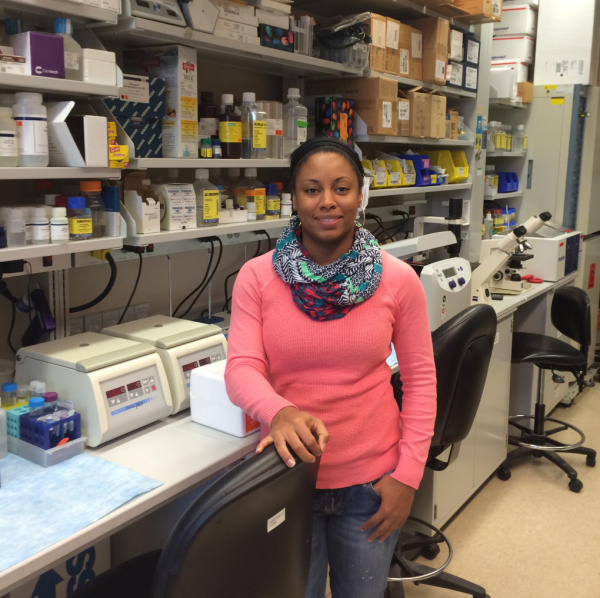Prevailing in Science
Ever since studying transposons (mobile genetic elements) in graduate school, I’ve been fascinated by DNA and the many natural ways DNA moves and recombines within genomes. Transposons are responsible for multidrug resistance in bacteria, and the major players in V(D)J recombination in humans were derived from transposons. Now, as a postdoctoral fellow in the National Cancer Institute of the NIH, I conduct research focused on gene therapy strategies for hematologic malignancies and immunodeficiencies, because I am interested in the clinical application of basic biology.
The lab of my mentor, Dr. Dennis Hickstein, develops gene transfer techniques in hematopoietic stem cells, so it is a perfect place to explore harnessing nature’s ability to modify genomes through viruses and transposons and how those changes can affect gene expression and phenotypes. In the lab, I use a lentivirus to introduce missing genes from immune deficient patient cells, aiming to correct the cells’ dysfunction, like abnormal differentiation.

Me in the lab, ready to tackle a busy day.
Genome engineering and genome editing have tremendous therapeutic potential. Several IRP investigators are examining innovative gene transfer techniques, including the use of viral vectors: adenovirus to correct Menkes disease and lentivirus to correct leukocyte adhesion deficiency (LAD); transposons like Sleeping Beauty to modify genomes and create model systems; nucleases and DNA molecules for their potential to manipulate genomes—for example, clustered regularly interspaced short palindromic repeats (CRISPRs) and transcription activator-like effector nucleases (TALENs).
With so much happening at the cutting-edge of science, biomedical research is extremely collaborative, and the people doing the work come from diverse backgrounds. As a Black woman from the South, I challenge every preconceived notion of scientist, and I am happy to do so. It needs to be done. The NIH values diversity and has recently recognized that many groups, particularly African-Americans, are under-represented among the senior leadership and principle investigators within the Intramural Program. A task force created to address the issue has proposed several recommendations. And the newly formed Network of African American Fellows at the NIH will help foster an environment that recognizes and supports black scientists.
Another notion that needs to be challenged is the idea of an alternative career in science. The academic career path (PhD, postdoc, faculty) is currently the actual path for so few scientists that it should hardly be considered the normal path. Scientific literacy and use of the scientific method to ask questions, collect information, and draw conclusions can benefit every occupational field. As such, PhD scientists pursue and succeed in careers in policy, business, intellectual property, communications, and many others. The career options for someone trained in analytical thinking and problem solving are broad, and scientists have applied their talents to “alternative” careers for decades. The discussion of “What to do with your PhD?” needs to begin long before postdoctoral fellowship. And I propose to rename the discussion of alternative careers in science to prevailing careers in science.
So, for a small portion of my time, I am replacing my pipette for a pen. In blogs to come, I will write about the postdoctoral experience at NIH and the pursuit of a prevailing career in science. Wish me luck!
Related Blog Posts
This page was last updated on Wednesday, July 5, 2023
